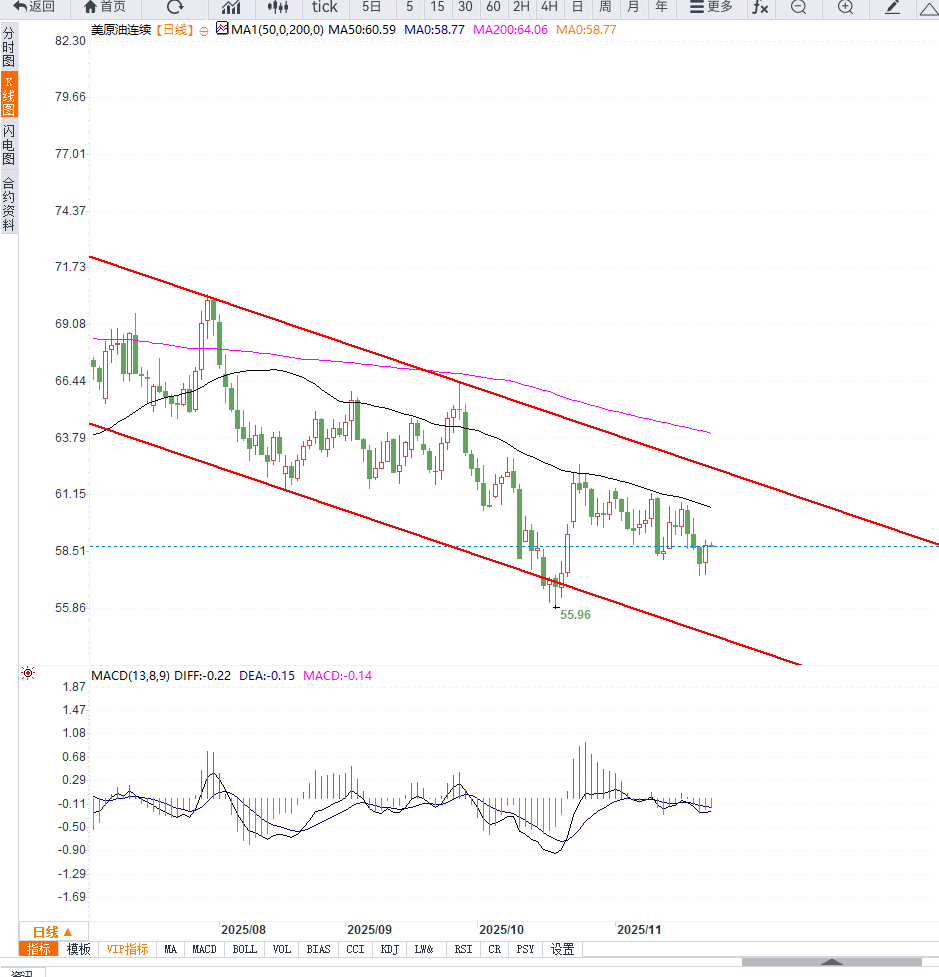Crude oil trading alert: Rising expectations of oversupply are putting downward pressure on oil prices; short-term trading is expected to remain volatile and range-bound.
2025-11-25 09:16:09
As the United States continues to push for peace talks among all parties, traders are beginning to bet on a potential easing of supply, making it difficult for oil prices to maintain their previous rebound momentum.

Market research indicates that multiple institutions have pointed out that if the situation takes a turn for the better and some restrictions imposed on relevant countries show signs of easing, it will directly change the global oil supply and demand balance.
In a report, Dennis Kissler, a senior analyst at BOK Financial, pointed out that once progress is made on the peace agreement, the market generally believes that some restrictions may be lifted, thereby strengthening expectations of a return of crude oil supply.
Meanwhile, buyers are becoming more cautious, and crude oil exports from some regions have declined. Some buyers have reduced their purchases due to policy and geopolitical uncertainties. Furthermore, Asian countries are recently increasing their purchases of Middle Eastern crude oil, further influencing global trade flows.
From a structural perspective, the crude oil market typically faces seasonal demand weakness before the end of the year. Refinery maintenance and reduced consumption of refined products often cause oil prices to trend downwards or fluctuate before mid-December.
Energy strategists say that current oil price trends are still in line with the seasonal decline pattern, and there is a lack of obvious positive drivers in the short term.
Arne Lohmann Rasmussen, chief analyst at A/S Global Risk Management, noted: "Oil prices may continue to experience volatile adjustments around the holidays, and any signs of a ceasefire or agreement could accelerate the price pullback."
The daily chart shows WTI crude oil remaining in a weak, oscillating pattern, with significant resistance from short-term moving averages. The 14-day RSI is in the neutral-to-weak range, indicating limited buying momentum. The candlestick pattern shows consecutive small-bodied fluctuations, reflecting the market's wait-and-see attitude towards future negotiations and supply news.
If prices remain capped by the resistance zone above $59.5, oil prices may fall back to around $58; a breakout with significant volume could lead to a short-term rebound. However, in the absence of fundamental support, the technical outlook remains bearish with a tendency towards a range-bound, weak pattern.

Editor's Note:
The current weakness in oil prices is more driven by expectations than by direct changes in actual supply and demand. Uncertainty surrounding peace negotiations, the possibility of sanctions easing, and adjustments in Asian purchasing flows have put the market in a highly sensitive phase. Without new demand-side stimulus, oil prices may continue their moderate downward trend, but any changes in supply expectations could amplify short-term volatility.
- Risk Warning and Disclaimer
- The market involves risk, and trading may not be suitable for all investors. This article is for reference only and does not constitute personal investment advice, nor does it take into account certain users’ specific investment objectives, financial situation, or other needs. Any investment decisions made based on this information are at your own risk.





















